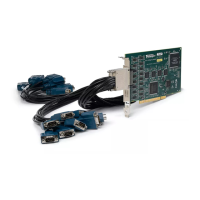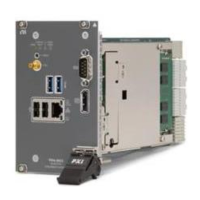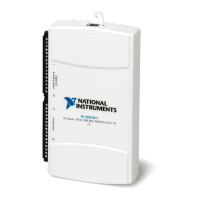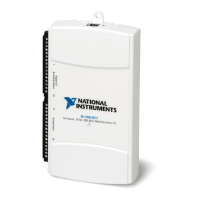Chapter 2 Analog Input
© National Instruments Corporation 2-3 E Series User Manual
across the input range. So, for an input range of 0 to 10 V, the voltage of
each code of a 16-bit ADC is
Some E Series devices support both unipolar and bipolar input ranges. A
unipolar input range means that the input voltage range is between 0 and
V
ref
, where V
ref
is a positive reference voltage. A bipolar input range means
that the input voltage range is between –V
ref
and V
ref
.
The NI-PGIA applies a different gain setting to the AI signal depending on
the input range. Gain refers to the factor by which the NI-PGIA multiplies
(amplifies) the input signal before sending it to the ADC. For example, for
the input range 0 to 100 mV, the NI-PGIA applies a gain of 100 to the
signal; for an input range of 0 to 5 V, the NI-PGIA applies a gain of 2.
Choose an input range that matches the expected input range of your signal.
A large input range can accommodate a large signal variation, but reduces
the voltage resolution. Choosing a smaller input range improves the voltage
resolution, but may result in the input signal going out of range.
For more information about programming these settings, refer to the
NI-DAQmx Help or the LabVIEW 8.x Help.
Tables 2-1, 2-2, and 2-3 show the input ranges and resolutions supported
by each E Series device.
Table 2-1. Input Ranges for NI 6020E, NI 6040E, NI 6052E, NI 6062E, and NI 6070E/6071E
Input Range Gain Polarity
Precision
NI 6020E NI 6040E NI 6052E NI 6062E
NI 6070E/
6071E
0 to +10 V
0 to +5 V
0 to +2V
0 to +1 V
0 to +500 mV
0 to +200 mV
0 to +100 mV
1
2
5
10
20
50
100
Unipolar 2.44 mV
1.22 mV
488 µV
244 µV
122 µV
48.8 µV
24.4 µV
2.44 mV
1.22 mV
488 µV
244 µV
122 µV
48.8 µV
24.4 µV
153 µV
76.3 µV
30.5 µV
15.3 µV
7.63 µV
3.05 µV
1.53 µV
2.44 mV
1.22 mV
488 µV
244 µV
122 µV
48.8 µV
24.4 µV
2.44 mV
1.22 mV
488 µV
244 µV
122 µV
48.8 µV
24.4 µV
10 V 0 V–
2
16
--------------------------- 153 µV=
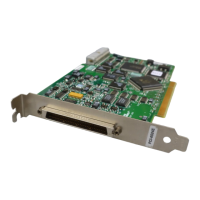
